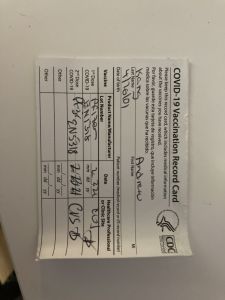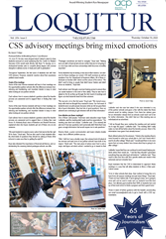With coronavirus cases continuously increasing, companies are struggling to distribute sufficient amounts of COVID-19 vaccines to all 50 states. Due to high demands, certain people in the workforce or with conditions are prioritized above others for the COVID-19 vaccine.
“People ages 65 and up are definitely a higher priority,” Susan Hendrie, a COVID-19 response coordinator, said. “What we know about coronavirus is that it affects people with underlying conditions and puts them at a higher risk, which can ultimately cause death so hopefully this vaccine can help prevent that.” Healthcare workers are also first to receive the vaccination.

“I understand why some people are prioritized above others but I don’t believe students should be on the bottom of that list. If students were to get vaccinated then maybe we could learn more traditionally instead of online classes,” Matthew Jun, a junior engineering major at Penn State University, said.
Over 56 million shots have been administered to the public with more than 3 million vaccine doses being produced each day however this may not be enough to stop the spread of COVID-19. “At least 80 percent of people would need to be vaccinated for COVID-19 cases to drop,” Hendrie said. But even If the public agrees to be vaccinated, will the vaccine give us our old lives back? “The vaccine is definitely going to help the cause but I really fully believe that it’s going to take some time,” Hendrie said. “I’m giving it at least another nine to 12 months If not longer for the public to start lifting the mask requirement.”
Ultimately it’s the people’s decision whether or not they feel comfortable receiving the vaccine. Some may feel uneasy because there are lots of concerns regarding how successful the vaccine will be considering its production was very quick. The FDA approved the production of three different COVID-19 vaccines all in under a year causing many to question if the vaccine was rushed and if it is safe.
The Moderna and Pfizer-Biotech vaccine has shown to be the most beneficial as they have proven through their clinical trials that its vaccine has a 94.5 percent chance of preventing COVID-19. Each dose would be around $20 dollars. The FDA has also approved another vaccine from AstraZeneca after it passed the requirements of it being at least 50percent effective. Although their vaccine has a lower chance of success at 70 percent, it is also cheaper with each dose costing $4 dollars.
All three of these companies have one thing in common, its COVID-19 vaccine actually requires two shots. After receiving the first dose the subject must wait multiple weeks before receiving the second shot. This may sound like a lengthy process but ultimately this multi-dose procedure is used to make the immunization as effective as possible.
Patients have reported mild symptoms ranging from fever, headache, sore throat, fatigue ness, etc. but this is normal with any vaccine, the flu shot also has very similar symptoms.

Although the vaccine has a 95 percent success rate, it is only effective if the people are willing to take it but a poll from Nature Medicine reported that only 71 percent of participants from a survey of 13,426 people in 19 different countries said they will likely take the vaccine. Some patients are also planning on receiving the first dose but not the second, which can cause a major problem because the second dose is what solidifies the entire immunization process.
“People are uncomfortable with getting vaccinated because they believe the false information on the internet without fact-checking,” Hendrie said. “There are people listening to others that are not qualified to be giving advice.”
“I can get the COVID-19 vaccine early because I work at a retirement home but I’m not sure if I want to. I heard that there are different side effects to getting the shot,” Jun said.


